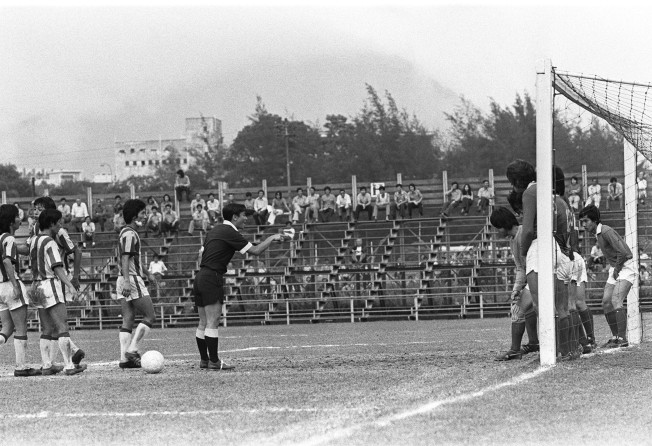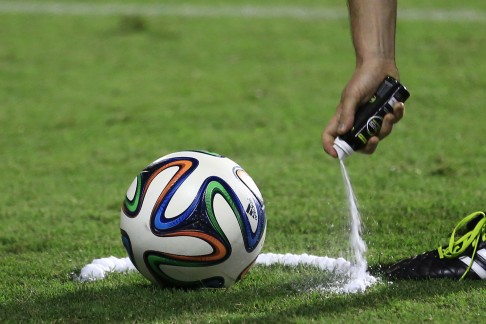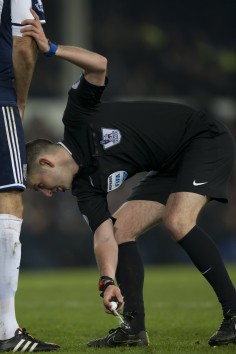Referees can exercise discretion on free kick ball placement
Match officials can exercise discretion depending on whether the side taking the kick is attacking or defending

Give them an inch and players will always take a mile, especially where free kicks are concerned. Strangely, referees can sometimes be lax about where play restarts, but will also demand absolute precision in other areas of the pitch.
At face value, this lack of consistency appears to be a problem, but here's the real truth why referees may or may not stick to precision on where free kicks should be taken.
Whenever there is a foul against the defending team near their goal line, referees permit the ball to be placed up to six yards from the goal line. This is exactly the same principle for goal kicks and free kicks awarded inside the goal area. Therefore in keeping with the spirit of this principle, referees allow a six-yard leeway in favour of the defending team.
Moving further up and away from the penalty area, free kicks around the defensive third may be given a leeway of about four yards. Here, taking free kicks due to fouls and indirect free kicks for offsides can lack precision by several yards.
Since it is highly unlikely that teams in their defensive third will shoot at goal or launch a fast counterattack, smart referees are not too fussed about accurate ball placement located way behind the halfway line.
However, when free kicks are awarded in attacking areas, referees become less thrifty with yardage allowance.

Free kicks about 40 yards from goal or around the halfway line are given a leeway of a couple of yards. This is because fouls in this area are usually tactical and made by players who are buying time for their teammates to get back and organise themselves defensively.
Referees award these kind of free kicks - and expect them to be taken quickly - as a means of simply returning possession to the disadvantaged team who were building up attacking play until they were fouled.
For instance, in last week's match between Tottenham Hotspur and Sunderland there were 14 "innocent-looking" fouls around the halfway line, where a player with possession was tactically fouled to prevent any swift counterattacks.
Returning possession to fouled teams and allowing them to quickly take free kicks is a fair way to balance the scales of justice
Referees understand that if there is no opportunity to play advantage, returning possession to fouled teams and allowing them to quickly take free kicks is a fair way to balance the scales of justice. But there are two conditions: the free kick must be taken approximately where the foul occurred and the ball must be stationary.
Sometimes opposing players may be closer than the required 10 yards but quick free kicks can still be taken. If an opposing player deliberately interferes with the quick free kick such as holding on to or standing on the ball, or intentionally intercepts the ball by sticking out a leg, the referee must caution the offending player.

All top players can get the ball up and over a wall of players and dipping down towards goal from the "sweet zone", which is 23 to 30 yards out.
This is exactly what happened with Sunderland's goal that came from a free kick awarded 28 yards from goal. Referee Chris Foy was precise with the ball placement and Sebastian Larsson executed his kick with deadly accuracy.
If we take the length of the pitch to be 100 yards, then a leeway of six yards at the defensive goal line gives players taking free kicks a buffer of 6 per cent of the pitch length. When the free kick is 70 yards from goal, the leeway of four yards is also about six per cent.
All top players can get the ball up and over a wall of players and dipping down towards goal from the 'sweet zone'
In the attacking half of the pitch, where free kicks are around 40 yards from goal, a flexibility of two yards equates to five per cent of the total distance to goal. While at 20 yards, a leeway of a yard is still five per cent of the distance to goal.
Players and coaches who complain that opponents are not taking free kicks precisely from the place that they fouled them can have nothing to complain about. It all depends on the foul's location on the pitch. By applying this, referees are remarkably consistent and this allows for better, faster, free-flowing games.
Agree or disagree? Contact Rational Ref at [email protected]